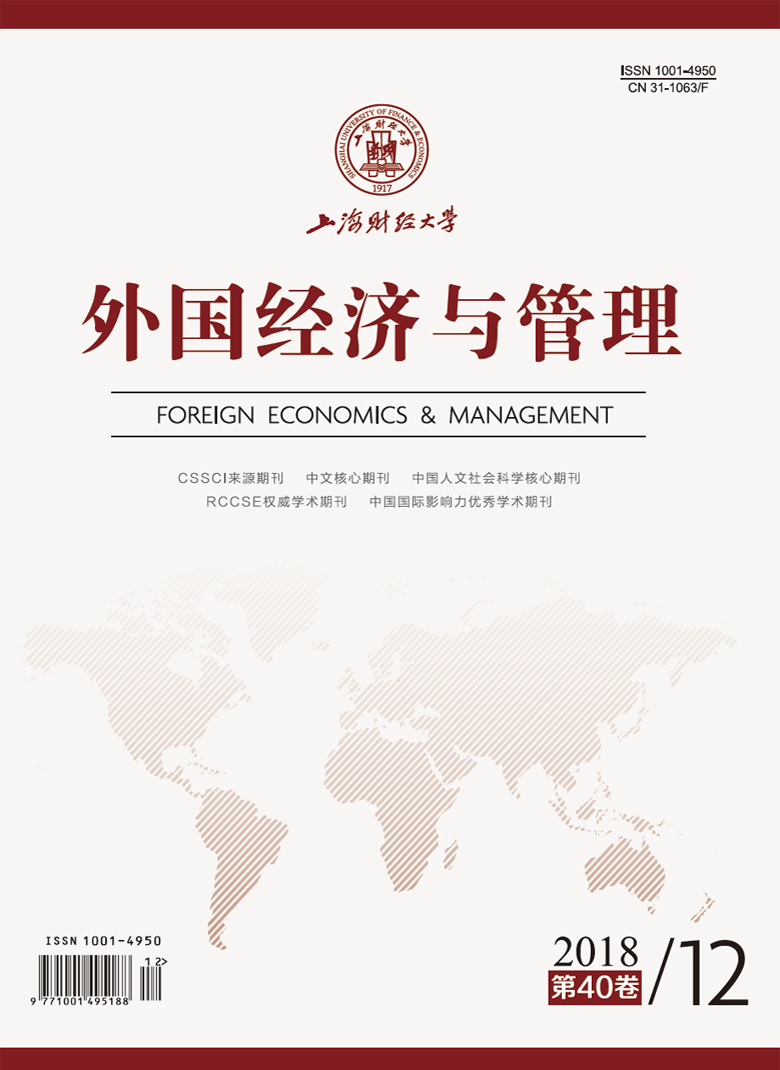放纵物指可以提供即时满足感但隐含着长期或延迟害处的一类事物,选择这类事物常意味着自我放纵;而自律物则指可以最大化长期效用但短期给予的满足感缺乏吸引力的一类事物,选择这类事物常意味着成功的自我控制。本文首先阐述了放纵物和自律物的概念内涵并与相似概念进行了辨析,同时总结了实证研究常用的操纵方法。随后,本文重点从基于消费者个体的“自我控制资源与动机”、基于放纵物/自律物特质的“负罪感与正当化理由”以及基于外部影响的“决策情境”三个方面梳理了放纵物与自律物“两难选择”行为的影响因素,并概括了新范式的研究发现。在此基础上,本文提出了放纵物和自律物选择的溢出效应并为营销实践和未来研究提供了建议。
“放纵物”与“自律物”消费行为研究述评
摘要
参考文献
1 董春艳, 郑毓煌. 消费者自我控制: 文献评述与研究展望[J]. 经济管理,2010, (11): 170-177 DOI:10.3969/j.issn.1673-0046.2010.11.096
2 童璐琼, 郑毓煌, 赵平. 借我一双时间的慧眼: 时间概念对消费者有益品和有害品选择的影响[J]. 营销科学学报,2011, (3): 42-50
3 王长征, 范永玺. 尾数定价策略对恶习产品和美德产品购买意愿的影响研究[J]. 管理现代化,2017, (4): 75-77 DOI:10.3969/j.issn.1003-1154.2017.04.020
4 Belei N, Geyskens K, Goukens C, et al. The best of both worlds? Effects of attribute-induced goal conflict on consumption of healthful indulgences[J]. Journal of Marketing Research,2012, 49(6): 900-909 DOI:10.1509/jmr.10.0155
5 Carroll K A, Samek A, Zepeda L. Food bundling as a health nudge: Investigating consumer fruit and vegetable selection using behavioral economics[J]. Appetite,2018, 121: 237-248 DOI:10.1016/j.appet.2017.11.082
6 Chernev A, Gal D. Categorization effects in value judgments: Averaging bias in evaluating combinations of vices and virtues[J]. Journal of Marketing Research,2010, 47(4): 738-747 DOI:10.1509/jmkr.47.4.738
7 Chernev A. The Dieter’s paradox[J]. Journal of Consumer Psychology,2011, 21(2): 178-183 DOI:10.1016/j.jcps.2010.08.002
8 Dhar R, Simonson I. Making complementary choices in consumption episodes: Highlighting versus balancing[J]. Journal of Marketing Research,1999, 36(1): 29-44 DOI:10.2307/3151913
9 Dhar R, Wertenbroch K. Consumer choice between hedonic and utilitarian goods[J]. Journal of Marketing Research,2000, 37(1): 60-71 DOI:10.1509/jmkr.37.1.60.18718
10 Dhar R, Wertenbroch K. Self-signaling and the costs and benefits of temptation in consumer choice[J]. Journal of Marketing Research,2012, 49(1): 15-25 DOI:10.1509/jmr.10.0490
11 Fishbach A, Dhar R. Goals as excuses or guides: The liberating effect of perceived goal progress on choice[J]. Journal of Consumer Research,2005, 32(3): 370-377 DOI:10.1086/jcr.2005.32.issue-3
12 Fishbach A, Zhang Y. Together or apart: When goals and temptations complement versus compete[J]. Journal of Personality and Social Psychology,2008, 94(4): 547-559 DOI:10.1037/0022-3514.94.4.547
14 Haws K L, Liu P J. Combining food type(s)and food quantity choice in a new food choice paradigm based on vice-virtue bundles[J]. Appetite,2016, 103: 441-449 DOI:10.1016/j.appet.2015.11.012
15 Huyghe E, Verstraeten J, Geuens M, et al. Clicks as a healthy alternative to bricks: How online grocery shopping reduces vice purchases[J]. Journal of Marketing Research,2017, 54(1): 61-74 DOI:10.1509/jmr.14.0490
16 Jain S. Marketing of vice goods: A strategic analysis of the package size decision[J]. Marketing Science,2012, 31(1): 36-51 DOI:10.1287/mksc.1110.0657
17 Jiang Y, Lei J. The effect of food toppings on calorie estimation and consumption[J]. Journal of Consumer Psychology,2014, 24(1): 63-69 DOI:10.1016/j.jcps.2013.06.003
19 Khan U, Dhar R. Licensing effect in consumer choice[J]. Journal of Marketing Research,2006, 43(2): 259-266 DOI:10.1509/jmkr.43.2.259
20 Khan U, Dhar R. Where there is a way, is there a will? The effect of future choices on self-control[J]. Journal of Experimental Psychology: General,2007, 136(2): 277-288 DOI:10.1037/0096-3445.136.2.277
21 Kim C J, Kim J. Waste aversion for virtue versus vice[A]. Moreau P, Puntoni S. Advances in consumer research[C]. Duluth, MN: Association for Consumer Research, 2016: 164–168.
22 Kivetz R, Simonson I. Self-control for the righteous: Toward a theory of precommitment to indulgence[J]. Journal of Consumer Research,2002a, 29(2): 199-217 DOI:10.1086/341571
23 Kivetz R, Simonson I. Earning the right to indulge: Effort as a determinant of customer preferences toward frequency program rewards[J]. Journal of Marketing Research,2002b, 39(2): 155-170 DOI:10.1509/jmkr.39.2.155.19084
24 Kivetz R, Zheng Y H. Determinants of justification and self-control[J]. Journal of Experimental Psychology: General,2006, 135(4): 572-587 DOI:10.1037/0096-3445.135.4.572
25 Kivetz R, Zheng Y H. The effects of promotions on hedonic versus utilitarian purchases[J]. Journal of Consumer Psychology,2017, 27(1): 59-68 DOI:10.1016/j.jcps.2016.05.005
26 Liu P J, Haws K L, Lamberton C, et al. Vice-virtue bundles[J]. Management Science,2015, 61(1): 204-228 DOI:10.1287/mnsc.2014.2053
27 Milkman K L, Rogers T, Bazerman M H. Highbrow films gather dust: Time-inconsistent preferences and online DVD rentals[J]. Management Science,2009, 55(6): 1047-1059 DOI:10.1287/mnsc.1080.0994
28 Mishra A, Mishra H. The influence of price discount versus bonus pack on the preference for virtue and vice foods[J]. Journal of Marketing Research,2011, 48(1): 196-206 DOI:10.1509/jmkr.48.1.196
29 O’Brien E, Roney E. Worth the wait? Leisure can be just as enjoyable with work left undone[J]. Psychological Science,2017, 28(7): 1000-1015 DOI:10.1177/0956797617701749
30 Okada E M. Justification effects on consumer choice of hedonic and utilitarian goods[J]. Journal of Marketing Research,2005, 42(1): 43-53 DOI:10.1509/jmkr.42.1.43.56889
31 Read D, Loewenstein G, Kalyanaraman S. Mixing virtue and vice: Combining the immediacy effect and the diversification heuristic[J]. Journal of Behavioral Decision Making,1999, 12(4): 257-273 DOI:10.1002/(ISSN)1099-0771
32 Savary J, Goldsmith K, Dhar R. Giving against the odds: When tempting alternatives increase willingness to donate[J]. Journal of Marketing Research,2015, 52(1): 27-38 DOI:10.1509/jmr.13.0244
33 Sela A, Berger J, Liu W. Variety, vice, and virtue: How assortment size influences option choice[J]. Journal of Consumer Research,2009, 35(6): 941-951 DOI:10.1086/593692
34 Shafir E, Simonson I, Tversky A. Reason-based choice[J]. Cognition,1993, 49(1-2): 11-36 DOI:10.1016/0010-0277(93)90034-S
35 Strahilevitz M, Myers J G. Donations to charity as purchase incentives: How well they work may depend on what you are trying to sell[J]. Journal of Consumer Research,1998, 24(4): 434-446 DOI:10.1086/jcr.1998.24.issue-4
36 Thomas M, Desai K K, Seenivasan S. How credit card payments increase unhealthy food purchases: Visceral regulation of vices[J]. Journal of Consumer Research,2011, 38(1): 126-139 DOI:10.1086/657331
37 Thomas M, Desai K K, Seenivasan S. Vice and virtue food: Perceived impulsiveness and healthfulness of 100 food items[R]. Johnson School Research Paper, Series No. 26–2012, 2012.
39 Vosgerau J, Scopelliti I, Huh Y E. Pleasure, guilt and regret in consumption: Revisiting the vice-virtue categorization in theories of self-control[A]. Moreau P, Puntoni S. Advances in consumer research[C]. Duluth, MN: Association for Consumer Research, 2016: 164–168.
40 Wertenbroch K. Consumption self-control by rationing purchase quantities of virtue and vice[J]. Marketing Science,1998, 17(4): 317-337 DOI:10.1287/mksc.17.4.317
41 Xu J, Schwarz N. Do we really need a reason to indulge?[J]. Journal of Marketing Research,2009, 46(1): 25-36 DOI:10.1509/jmkr.46.1.25
42 Yan J, Tian K, Heravi S, et al. The vices and virtues of consumption choices: Price promotion and consumer decision making[J]. Marketing Letters,2017, 28(3): 461-475 DOI:10.1007/s11002-017-9421-x
引用本文
杨韶光, 金立印. “放纵物”与“自律物”消费行为研究述评[J]. 外国经济与管理, 2018, 40(12): 84-97.
导出参考文献,格式为:






 16084
16084  11102
11102

